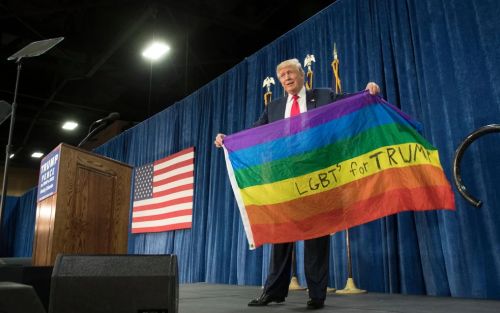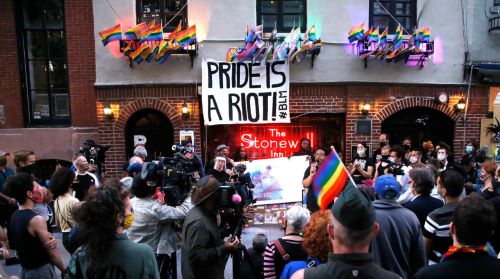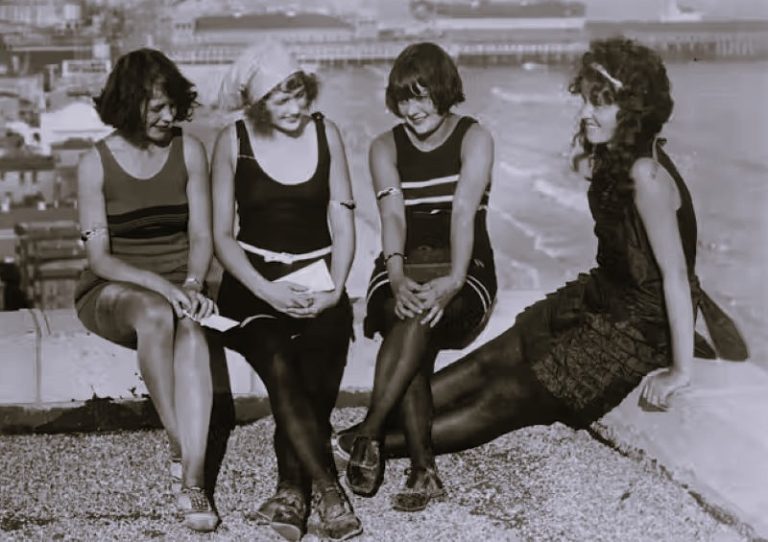

In his first campaign he courted the vote. Now, with power consolidated and the party’s far-right base emboldened, the incentives have shifted entirely.

By Matthew A. McIntosh
Public Historian
Brewminate
Introduction
When Donald Trump first stepped into the national political arena, some in the LGBTQ+ community entertained the possibility that he might be a different kind of Republican. His early gestures toward inclusion were uncharacteristic for a party leadership that had long tethered itself to socially conservative orthodoxy. These moves were not sweeping reforms, but they were symbolic enough to raise eyebrows, and hopes.
In 2012, the Miss Universe pageant, owned by Trump at the time, reversed its own exclusionary rule to allow transgender contestant Jenna Talackova to compete. The decision was framed as a matter of fairness and legal compliance, and Trump himself emphasized that if she met Canadian gender recognition requirements, there should be no barrier. Four years later, during the 2016 campaign, Trump publicly told Caitlyn Jenner she could use whichever bathroom she wished at Trump Tower. Jenner took him up on the offer, recording the moment as an affirmation of his stated openness.
These moments, amplified by campaign rhetoric about protecting “all Americans,” helped shape an image of a candidate who might sidestep the culture war’s more hostile trenches. For a small but visible segment of LGBTQ+ voters, it suggested a transactional Republicanism, one that could set aside moralizing if it served other political goals.
A Calculated Courtship
Trump’s early flirtation with LGBTQ+ inclusion was never rooted in deep policy commitments. It was, in large part, performance. His comments cost him little political capital in 2016, a year when the Republican establishment was scrambling to make peace with his insurgent candidacy. In interviews, he often framed these gestures as pragmatic rather than ideological, a businessman’s willingness to “live and let live.”
Polling from that era showed him outperforming past GOP nominees among gay men, though still drawing only a minority of the LGBTQ+ vote overall. The gap between rhetoric and policy remained, but the tone was notable, especially in contrast to the Obama years, when Republican leaders were still mounting legal challenges to marriage equality.
The Turn

Once in office, and again more dramatically upon his return in 2025, Trump abandoned the inclusive gestures and embraced policies that advocates describe as the most aggressive rollback of LGBTQ+ rights in modern history. This shift was neither sudden nor accidental. It was a calculated realignment with the hard-right faction that had become central to his political survival.
Within months, federal agencies began reversing protections for transgender workers, students, and service members. The military reinstated a ban on most transgender personnel. Health and Human Services narrowed the definition of sex discrimination, leaving many transgender patients without recourse in cases of denial of care. Proposed changes to Title IX guidance erased protections for transgender students in sports and school facilities.
Advocacy groups such as Lambda Legal and the Human Rights Campaign point to a pattern: incremental but relentless moves that, taken together, create an atmosphere of legal uncertainty and social hostility.
Splitting the Letters
One of the more insidious elements of the new strategy, according to several civil rights experts, is its effort to divide the LGBTQ+ coalition. Legislation and rhetoric increasingly target transgender rights while conspicuously leaving protections for lesbian, gay, and bisexual individuals untouched, at least in the short term.
This is not accidental. By assuring some members of the coalition that their rights will remain secure, the administration fosters a false sense of safety and encourages fractures within what has historically been a unified front. “If you sacrifice that community, perhaps you will be spared,” as one advocate put it, describing the tactic’s corrosive logic.
The approach echoes historical strategies used to weaken civil rights movements by isolating the most politically vulnerable subgroup. Here, transgender Americans, who make up an estimated 1% or less of the U.S. population, are singled out for bans on gender-affirming care, bathroom access, and athletic participation. The hope, critics say, is to avoid a united backlash from the broader LGBTQ+ community.
From Pride to Precarity
The contrast between Trump’s early overtures and his current posture could hardly be sharper. In 2016, he claimed to be a friend to “our wonderful LGBTQ citizens” during the Republican National Convention, an unprecedented line in that setting. In 2025, his administration is advancing an agenda that LGBTQ+ leaders warn could dismantle decades of hard-won protections.
The political calculus is clear enough. Early gestures served to soften his image in a crowded primary field and to project a kind of cultural flexibility that set him apart from traditional Republicans. Now, with power consolidated and the party’s far-right base emboldened, the incentives have shifted entirely. For many in the LGBTQ+ community, the lesson is already clear: the door Trump once opened was never meant to stay that way. It was a prop, useful for a scene, before the script called for it to be slammed shut.
Originally published by Brewminate, 08.12.2025, under the terms of a Creative Commons Attribution-NonCommercial-NoDerivatives 4.0 International license.


